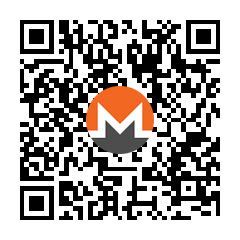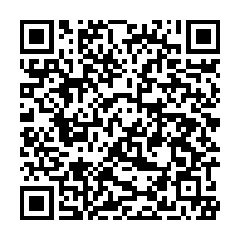Anesthetic Bliss
Always happy to get a tip!
XMR: 83RaKSdDrVh92PgZpkQN78iM9zAQre18VJ3A7NSG6VXYCPWWsNLPt7PdBdMp2PTpwjPs8yka22cAc3qthN6nuru7VmgEL2v

- 3 Posts
- 13 Comments

 0·14 days ago
0·14 days agoYes you can just say that.
-
If someone knows for a fact that you have Monero and they know the exact amount, and want to know where it came from:
- Move them to a new wallet
- I mined these coins a very long time ago, I do not have the mining equipment anymore
- Also the wallet I used to mine them was on an old computer that got infected so I moved all to this new wallet
-
If someone suspects that you have Monero but does NOT know how much:
- Imagine you own $10k in Monero
- Move a small amount to a wallet ($200??)
- If authorities ask you how much you have, show them the wallet with $200.
- Go back to scenario 1 (I got those 200 from mining a long time ago etc etc)
-
If no one suspects that you have Monero, and for now you are “in the clear”:
- Follow good opsec
- Do not tell anyone that you have Monero
- Do not exchange that Monero for fiat using KYC services. Always use something like Haveno, or use the Monero to buy prepaid cards anonymously to use in shops
- If someone starts suspecting that you might be using Monero but does not know how much, revert to scenario 2
Of course it is better if you avoid anyone knowing you have Monero altogether.
Remember that you always have the option of moving them to a new wallet, say you got hacked and have no access to it.
Of course all this depends on your country and how authorities are there. If you live in a very authoritarian area where authorities do not care about evidence and they only care that “you look guilty”, nothing will save you. If you live in a country where you must go to court and be proven guilty, I think with Monero its pretty easy to do any of those steps and cover your ass.
But as always, try to not be discovered using Monero in the first place
-

 0·14 days ago
0·14 days agoYes that is exactly it.
That is why you should always make sure to lose all your XMR on a boating accident right after acquiring them 😉

 0·14 days ago
0·14 days agoHaveno all the way!
Super easy, just open the app, add some funds, click on “take offer” on whatever trade there is and follow the steps.

 0·18 days ago
0·18 days agoI understand your point, however that is not really the topic at hand, I was just trying to give some context and to open the discussion as to why XMR does not seem to be gaining traction in Russia or why there are no Ruble trades in Haveno.
Now I do not want to enter a political discussion here
It is irrelevant for the conversation if it is a good or a bad strategy, or if it is moral or immoral to apply these sanctions. If I were a Russian individual, I would be using Monero to escape these sanctions, which leads me to wonder whether or not this is happening or why we do not see Russian trades in Haveno.

 0·18 days ago
0·18 days agoI would like to add that if you actually have XMR in a wallet that you got from mining, and you never moved those funds before, you CAN confirm that those funds came from mining. In fact, the GUI wallet will show a symbol indicating that it came from mining (what’s called a “coinbase” transaction).
However you could just say that you moved the funds from the mining wallet to this other wallet, but then I will ask again: Show me the mining wallet that got those mining transactions.

 0·18 days ago
0·18 days agoI would say depending on who is asking you…
If you have there some xmr valued many hundreds of euros, it is pretty unlikely you actually mined it unless you have some very powerful setup.
If I am the government, then I will ask you: Show me this mining setup. Prove to me that you at least owned or had access to this setup.
I think when we talk about plausible deniability it’s not in the context or “Where did this money come from”, but more along the lines of “I cannot prove it was actually you who bought this item”.
Imagine you buy an item that is restricted or sanctioned in your area, plausible deniability makes it so it is very difficult for me to prove in a court it was you who bought it, and very easy for you to evade these accusations.
If someone forces you to open your wallet, you can just have a second hidden wallet where you keep your stash, and then just open another wallet with, let’s say, 5 or 10 euros worth or XMR that you can actually mine in a reasonable amount of time with some old machines.

 0·20 days ago
0·20 days agoThat is a very cool mechanism. Thanks for the info!
Just watched the 3 available episodes.
Quite impressed with the quality so far, and really excited for you to make more episodes!
This is a very nice continuation to Breaking Monero, nicely updated to the current times.
Hopefully it will not stop without closure like Breaking Monero though, all my luck to you! Keep up the good work :)

 0·1 month ago
0·1 month agoYes you are right, it was too early in the morning for me to process properly…
Statistically you should see each output used an average of 16 times, that makes sense.
Cheers!

 0·1 month ago
0·1 month agoI didn’t know the protocol tried to use every output in around 16 transactions. I know about the 16 ring size, but I didn’t know it also tried to use each output 16 times. If so, that is very smart and interesting. You learn something new every day!
The idea of sweeping them and then churning the merged output is also smart.
Oh well I guess we just have to wait for FCMP++ where theoretically all this will be no longer relevant :)
I remember watching the breaking monero series, when it was mentioned that (paraphrasing) “Rings are what give security to Monero but I really hope we get rid of them”… That time is finally getting closer :)

 0·1 month ago
0·1 month agoI think there is one very good usecase for churning though.
And before anything, yes I know that one should not use CEX but in some cases it is just much more convenient. Although I am now starting to use Haveno, I get not everyone is up to it, and CEX is just plain easier.
Imagine the following scenario:
I buy a shitcoin over at a KYC’d CEX.
I send that coin to a centralized swap, or trade it with a compromised person, in exchange of XMR.
Lets say I repeatedly do that procedure with the same person or CEX. Then I end with multiple “small” outputs on my wallet, all from the same entity. Let’s say for example 10 outputs of 0.1 XMR, which all have been sent to me by the same entity.
Now I want to buy something that costs 1 XMR. I need to use my 10 existing outputs. I make a transaction that takes 10 inputs and 2 outputs (what I buy + change). The transaction has 10 inputs, and all of those inputs have a ring, where one of the members of each ring is an output controlled by the compromised entity.
The likelihood of someone making a transaction with 10 inputs, where those 10 inputs happen to contain a member in the ring that was sent by that specific exchange and that is linkable to my identity is near zero, unless it is me who is spending those 10 outputs.
Therefore, the person that sent me those 10 outputs can make a very well educated guess that it was me who bought that item for 1 XMR.
This “vulnerability” is actually talked about in the Breaking Monero series, and as far as I know, it will be solved when FCMP++ comes, since we will get rid of rings altogether.
However let’s say I do one step of churning with all those outputs without mixing them with eachother. That is, I send to myself 10 transactions of 0.1 XMR, so I just “forward” each output to myself once, without making any transaction that contains two poisoned inputs at the same time.
Then I will still end up with 10 outputs of 0.1 XMR, but all the “poisoned” outputs are present in different and unlinkable transactions, and the negative actor does not know whether they are truly spent or not.
Then I can actually join those 10 outputs into one 1XMR transaction safely, knowing that I am the only person who knows where those 10 outputs come from.
Am I wrong in this thought process?

 0·1 month ago
0·1 month agoAm I understanding this correctly?
https://moneromarket.io/listing/911d9a4a-c4a0-446c-a155-4efdfaf7002f
86KwquavD1THnRG5iuBDyJ5fEbJECY8Cmjfp68Kpx3TM4HXXpuMy3RvBbwM7DWnBXETSg3iSuTK2PTuxh3mXacFd1Zqt6GD

They add support for USDT I assume, as there is no support yet. Weird wording I agree